The “big Greenland melt”
- Melting Ice off Greenland.
Just recently I interviewed a scientist who told me he assumed last year’s record melt in Greenland was a one-off thing and not necessarily a result of climate change. Or rather, he said, it was impossible to say until we see whether it actually happens again. Given that the Greenland ice sheet is the biggest ice mass in the northern hemisphere and would also have a huge impact on global sea levels if it melts, it is encouraging to know that a huge effort is going on to find out exactly what is happening.
Ice Blogger’s gallery on climate change in Greenland
Audio feature on climate change in Greenland (Irene Quaile, for DW)
Tim Radford of Climate News Network has just published an article on the subject, with an excellent overview. He quotes scientists from Sheffield, UK, who have come up with a new theory. This is what Tim has to say. I quote at length, as it such a good summary of what has been happening and the possible explanations so far. Thanks Tim Radford and Climate News Network for drawing our attention to the latest research and filling in so much background. Over to you:
“First: the story so far. For a few days in July 2012, almost 97% of the surface of Greenland began suddenly to thaw. This was a melt on an unprecedented scale.
Greenland carries a burden of three million cubic kilometres of ice and even in the summer, most of it stays frozen, partly because of the island’s high latitude and partly because ice reflects sunlight, and tends normally to serve as its own insulator.
The event was so unusual, and so unexpected, and on such a scale that nobody seriously suggested that the dramatic conversion of snow to slush was direct evidence of climate change because of human-induced global warming.
Soot, smoke and heat
At first, climatologists were inclined to see the thaw as a consequence of the record-breaking heat waves and forest fires that afflicted North America last summer: snow could have been darkened by columns of soot and smoke from forest fires, just enough to start absorbing the sunlight, some reasoned.
Then in April a team at the University of Wisconsin-Madison suggested that freak cloud behaviour over Greenland at the time might have caused the melting. Clouds normally block sunlight and keep the terrain below them cool.
But these clouds could have been thin enough to let solar radiation through, but thick enough to trap the consequential infra-red radiation from the ground, and raise the local temperature levels.
Now Edward Hanna and colleagues at Sheffield report in the International Journal of Climatology that they have another explanation. Unusual atmospheric circulation and changes in the jet stream – the same changes that almost washed away summer in England – sent a blister of warm air sweeping over the ice sheet.
Hanna and his team analysed all the weather data collected by the Danish Meteorological Institute and by US researchers, and then employed satellite readings and a computer simulation called SnowModel to reconstruct the strange turn of events. And climate change may after all be a suspect.
High melt years
The Greenland Ice Sheet is a highly sensitive indicator of regional and global change, and, says Prof Hanna, been undergoing rapid warming, and losing ice, for at least the last five years and probably the last 20.
“Our research found that a ‘heat dome’ of warm southerly winds over the ice sheet led to widespread surface melting.” This was not predicted by the climate models used by the Intergovernmental Panel on Climate Change, and perhaps that indicated a deficiency in those models, he suggested.
The event seemed to be linked to changes in a phenomenon known to oceanographers and meteorologists as the summer North Atlantic Oscillation (NAO), another well-observed high pressure system called the Greenland Blocking Index, and the polar jet stream, all of which sent warm southerly winds sweeping over Greenland’s western coast.
“The next five to 10 years will reveal whether or not 2012 was a rare event resulting from natural variability of the NAO or part of an emerging pattern of new extreme high melt years.” It was hard to predict future changes in the Greenland climate in the current state of knowledge, but important to keep on trying.
There is an awful lot of ice on top of Greenland. Once it starts to melt, it is likely to be, say the Sheffield scientists, “dominant contributor to global sea level change over the next 100 to 1,000 years.”
Tim Radford, Climate News Network, 18.6.2013.
The Ice Blogger is heading off for a short break. Back July 8th, with new ice and snow pictures, I hope!
Climate Reality in Istanbul
GUEST BLOG:
As promised in the last blog posting, climate activist Cara Augustenborg has written up some impressions from her meeting with “Climate Reality Leaders” from around the globe in Istanbul. Thank you Cara! Over to you:
This week I had the honour of becoming a part of former U.S. vice president Al Gore’s global action on climate change, the Climate Reality Project. I now join over 5,000 other Climate Leaders from around the world in presenting the Climate Reality message, an updated version of Mr. Gore’s presentation from the 2006 movie, An Inconvenient Truth , to my community and anyone else who will listen.
Over 600 of us from 94 countries gathered in Taksim, Istanbul last weekend to receive training from Mr. Gore and the Climate Reality team and develop the necessary skills to bring a real understanding of the climate crisis to the world. It was a fitting location for so many environmental activists and educators to gather, given its proximity to the ongoing Occupy Gezi movement. As we equipped ourselves with the skills necessary to create action on climate change, Turkish protesters in nearby Gezi Park fought to win their own environment and democracy struggles. Many of us were caught in the middle of that struggle during the worst police clash last Saturday night. I’ll describe that frightening experience in an upcoming blog post on my own site.
Our Climate Reality training lasted 2.5 days and covered everything from communication skills, climate impacts, and social media, but of course the highlight of the weekend was the chance to spend ten hours in Al Gore’s presence soaking up every morsel of knowledge he could give us in that time. As Vice President of the United States, Mr. Gore was often referred to as wooden and robotic in his speaking style, but when it comes to climate-related issues, he is far from either and his style sometimes resembles that of a Baptist preacher when he gets really passionate about a topic. The audience could not get enough of Mr. Gore’s enthusiasm and motivational words, and at times, I was moved to tears as he inspired me to do more to win the conversation” on climate change.
The scale of The Climate Reality Project is impressive. In a 2006 Today Show interview, Al Gore said he aimed to teach 100 people to give his slideshow presentation and spread the word on climate change. Seven years later, he has trained over 5,000 of us to help our communities to understand the connection between over-reliance on fossil fuels and our changing climate. By the end of this summer, we will be nearly 6,000 strong. Given the financial resources of the climate change denial industry, the unique grassroots approach of the Climate Reality Project is embracing a philosophy that the number of people fighting for a cause will win over the number of euros invested in fighting against that cause. In our own group of 600+ delegates, we certainly felt more empowered to enact change now, with our new support of a worldwide climate change “family”, than we did before we arrived.
If you have seen “Inconvenient Truth”, you already know a lot of the background to Al Gore’s presentation, but there was lots of new information he presented over the weekend that surprised me, particularly regarding new evidence on the impacts of climate change and some exciting ways that countries (particularly developing countries) are both mitigating and adapting to climate change. I will be blogging about these issues on my own site over the coming weeks and thousands of us are available to present the new Climate Reality message in person by booking a presentation in your own area through the Climate Reality website
From Alaska to tear-gas in Istanbul
“Came for climate change training and just got tear gassed by Turkish police on walk home from dinner to hotel. SHAKEN BUT NOT STIRRED…” was the message I got from Cara Augustenborg in Istanbul at the weekend. Cara, whom I first met in Alaska when she was a “Climate Change College” ambassador, is now Ireland’s first “Climate Reality Leader”.
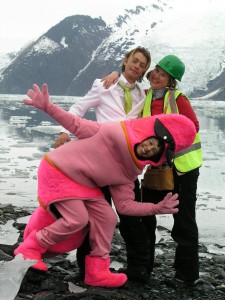
Cara, in the green hat, posing with fellow youth climate ambassadors Aart and Erika in Alaska, 2008. They were filming publicity stunts for their climate-saving projects.
She will be writing a guest blog here in the next couple of days. If you take a look at the Ice Blog banner, the lady with the beige hat in the kayak is Cara. I took the photo from the kayak behind during the trip to Alaska in 2008 when the Ice Blog was born. The expedition was to find out about the impacts of climate change on the Arctic, including a trip to the Arctic research station in Barrow, meetings with local people in the northernmost town in the USA and a visit to the receding Begich Boggs glaciers near Whittier.
I was thrilled when Cara told me recently she had been chosen a “Climate Reality Leader” and invited to a climate workshop with Al Gore in Istanbul. Expect more on that in her guest post for the Ice Blog very soon. As it turned out, she and her fellow “climate leaders” ended up bang in the middle of the pro-democracy protests.
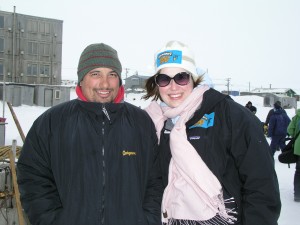
Cara and Kayan – “Give me a solar-powered snow mobile and I’ll use it” was the young Eskimo’s quip in Barrow, Alaska.
Cara is one of those committed people who live, work and think climate. She set up Ireland’s first website on “greening” your home, worked on biofuels at Dublin University and now successfully runs her own consultancy.
“Baked Alaska” – Picture gallery from the Climate Change College Expedition to Alaska
How big is Chinese interest in Greenland?
I have come across an interesting perspective on this on www.chinadialogue.net. “The Chinese scramble into Greenland is overhyped” is the headline of an article by Jonas Parello-Plesner. The author maintains there is little evidence of a Chinese scramble for the Arctic. This would seem to contradict a lot of what I have been hearing and reading, so the title jumped out at me. The article appears on a bilingual English-Chinese site dealing with environment-related issues.
Clearly, Beijing is interested in accessing mineral resources all over the world. As far as the Arctic is concerned, the question, it seems to me, is to what extent that interest is already turning into involvement. The trade agreement with Iceland is one sure sign of interest in the shipping routes through the Arctic, as discussed here on the Ice Blog and in various articles over the past year or so. The new Chinese icebreaker and Chinese voyages through the High North are other indicators of interest turning into activity. When it comes to Greenland, Jonas Parello-Plesner has some interesting points. Let me quote one of them: “Actually, the public face of Chinese involvement, Xiaogang Hu of London Mining, who was spearheading a high profile investment in an iron ore project, left his position in April. Locals explained this as a result of new Greenlandic leader Hammond’s intention to revise the Large Scale Act, which was enacted under the previous government and allows scores of foreign workers on mining projects. Xiaogang was als the link to Chinese investors like Sichuan Xinye Mining Investment or the China Development Bank.”
This is, I believe, an interesting development. “It looks like Chinese investors – and their workers – are waiting and watching, rather than invading,” is the article’s conclusion from this. Remember all the talk of the 2,000 Chinese workers reported to be heading for Greenland? Concern about this was said to be one of the factors that led to the change of government. Understandably, the Greenlanders would like to have the wealth to fund independence from Denmark. But at what cost? The major price could well be environmental destruction. The other question for the island’s leaders is how they can ensure that Greenland actually benefits from mining or drilling activities. The small population would have to work with foreign partners. The new government has introduced royalties to prevent profits disappearing offshore. Parello-Plessner says the challenge for Greenland is not just how to deal with Chinese interest, but “how to transform into a successful resource economy”.
I think he puts the situation in a nutshell: “With its tiny population, there are question marks over the ability of Greenland’s small negotiation teams to secure sufficiently stringent criteria that ensure investments are sustainable and environmentally acceptable. If it is unsuccessful, Greenland might simply become like other resource rich countries before it – it might think it had hit the resource jackpot, only to find out that it was really a curse.”
Meanwhile, Greenland’s ice continues to melt. Let us not forget the reasons for the opening-up of the Arctic. And what consequences human-made climate warming will have for people all over the globe. Here is a link to one interesting recent report on the Greenland melt and implications for sea level rise:
At the big climate change impacts conference I attended in Potsdam recently, the experts stressed the need to adapt to climate change now and not wait for international agreements. Adaptation has become a necessity to avoid or minimize damage from climate-related events. I often wonder whether this could take attention away from the need to mitigate. Wolfgang Lucht from the Potsdam Institute for Climate Impacts thinks it is the other way round. The more we know about the measures needed to deal with likely impacts, the more urgent becomes the need to mitigate climate change by reducing emissions. Our capacity to adapt is not unlimited, says Lucht, who also holds a chair in sustainability science at Berlin’s Humboldt University. “We have evidence that climate change could have played a role in the collapse of complex civilizations. It is not certain, but there are signs that changes in the environment could have had a major impact, for instance through changing the availability of resources a society relied on”.
Can we keep that in mind when it comes to developing the Arctic for more oil, gas and minerals?
Indigenous unite at Arctic meeting
Alta in far northern Norway was the scene of a key meeting of indigenous representatives from all over the world this week. The meeting was hosted by the Sami, the indigenous people of Scandinavia. The representatives signed a document taking UN member countries to task for “perpetuating the historic marginalization and exploitation of their rights and resources, most recently manifested in the illegal takeover of land by governments and multinational corporations in a race to meet the escalating global demand for food, fuel, fiber and mineral wealth”, according to a statement by Tebtebba. (Indigenous Peoples’ International Centre for Policy Research and Education)
This “Alta Declaration” is part of preparations for the World Conference on Indigenous Peoples which will take place in New York in September 2014. The statement calls on UN members to halt development models which are damaging to the livelihoods and health of indigenous peoples and the environment, “from forests and peatlands to rivers and glaciers that are of great global significance in the battle against the catastrophic effects of climate change”.
The chair of the meeting, Victoria Tauli-Corpuz said “I believe strongly that indigenous people are going to be the one who will save Mother Earth from ending in a disastrous situation”. That is an inspiring thought, but it would be quite a tall order and a huge responsibility to impose on the indigenous peoples, given the contributions the rest of us have been making to pollution and climate change. “We are in a very serious crisis – the environment is very much under stress. We have proven that the remaining ecosystems, the remaining lands and territories, the remaining oceans and waters – those that are still able to provide the basic needs of its populations – are found in our territories”, said Tauli-Corpuz, who heads Tebtebba, which is based in the Philippines.
The Arctic gold rush is clearly affecting Arctic indigenous peoples directly. But as the recent Arctic Council meeting showed, the rest of the world is taking a huge interest in claiming any “benefits” human-induced climate change is producing, in the form of easier access to the region and its resources.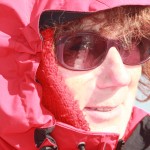
It will also be interesting to observe the positions taken by indigenous peoples in places like Greenland. Wealth from mining or drilling to access resources is a tempting prospect, and could contribute towards increased autonomy. At the same time, there are clearly enormous risks to the environment. Is sustainable development of the “high north” possible at all?









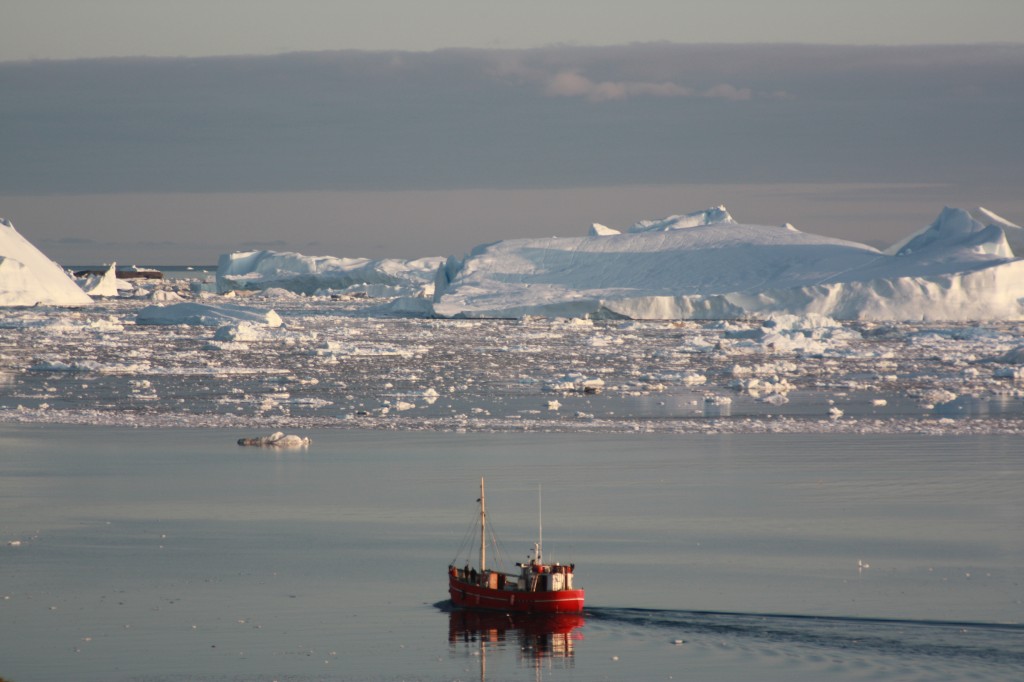

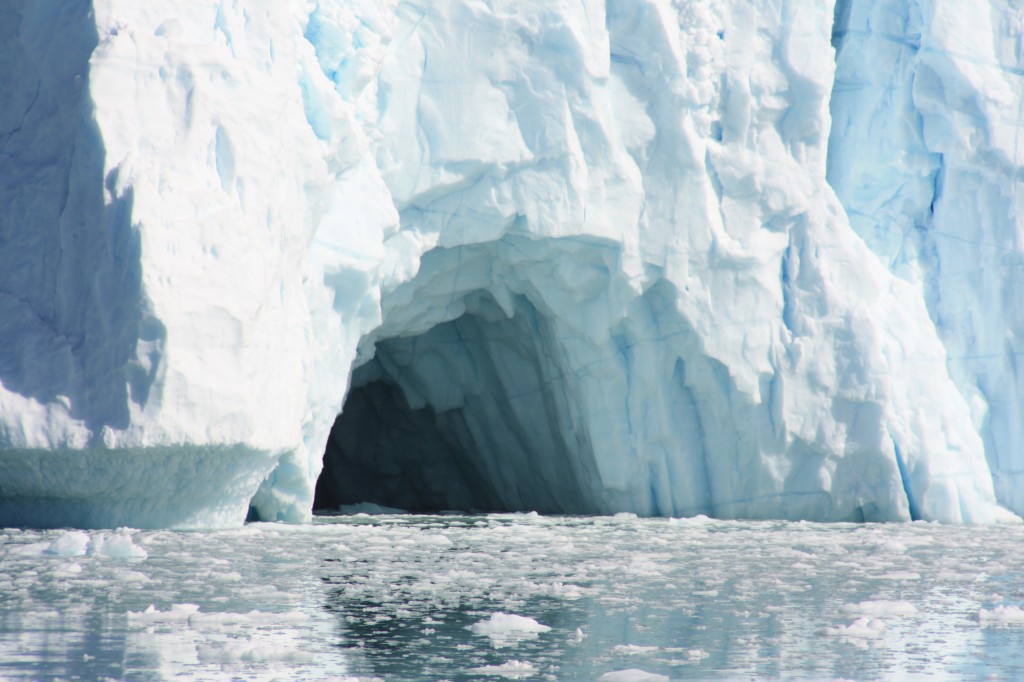
















Feedback